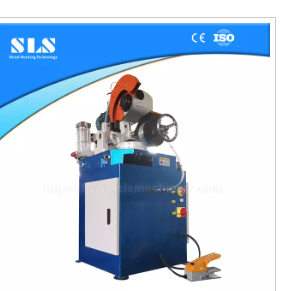Understanding the Basics
A roller pipe bending machine is an advanced industrial tool designed for bending metal pipes and tubes. This equipment plays a pivotal role in numerous sectors, including automotive, aerospace, and construction. The machine uses two or more rollers to apply pressure and force to bend the pipe to desired angles and curves.
Key Features and Specifications
Roller pipe bending machines typically come in manual, semi-automatic, or fully automatic models. The choice of machine depends on the production needs, precision requirements, and budget constraints of the operation. Some common specifications include:
- Roller Diameter: Varies from 50 mm to 400 mm, accommodating different pipe diameters.
- Bending Capacity: Can handle pipes from 1/4 inch up to 24 inches in diameter.
- Bending Speed: Adjustable speeds ranging from 1 to 15 RPM, allowing operators to match the bending pace with material specifications.
How It Works: The Mechanics
The fundamental operation involves feeding a metal pipe between rollers that gradually apply pressure and shape the pipe as it moves through the machine. The top roller exerts downward force while the side rollers guide or push the pipe into a curve. Operators can adjust the positioning of these rollers to control the bend radius and angle.
Applications of Roller Pipe Bending Machines
These machines are crucial for creating curved metal parts used in various applications:
- Automotive: Manufacturing of exhaust pipes, frames, and structural components.
- Construction: Shaping of beams, handrails, and architectural elements.
- Shipbuilding: Production of pipes and conduits for maritime structures.
Advantages Over Traditional Bending Methods
Compared to old-school methods, roller pipe bending machines offer enhanced precision, repeatability, and efficiency. They reduce waste and energy consumption significantly, making them a go-to choice for environmentally conscious businesses. The automation capabilities also cut down labor costs and reduce the incidence of human error.
Choosing the Right Machine
Selecting the right roller pipe bending machine involves considering the material type, pipe diameter, and bend precision. Steel, aluminum, and copper pipes require different machine settings and capacities. It’s also crucial to consider the after-sales support and availability of spare parts.
Opt for a machine with robust customer service, ensuring you can maintain high productivity with minimal downtime. For more detailed information on different models, check out this comprehensive guide on the roller pipe bending machine.
Essential Tips for Maintenance
Regular maintenance is key to prolonging the lifespan and efficiency of the machine. This includes routine checks of the hydraulic system, ensuring all rollers are free from debris, and lubricating moving parts to prevent wear and tear. Implementing a consistent maintenance schedule avoids unexpected downtime and costly repairs.
Conclusion
Investing in a high-quality roller pipe bending machine can transform your manufacturing operations by increasing efficiency, reducing costs, and enhancing product quality. As industries continue to demand higher precision and versatility, these machines are set to play an even more critical role in the global manufacturing landscape. Remember to prioritize reliability and support when making your choice to ensure a worthwhile investment in your production capabilities.
